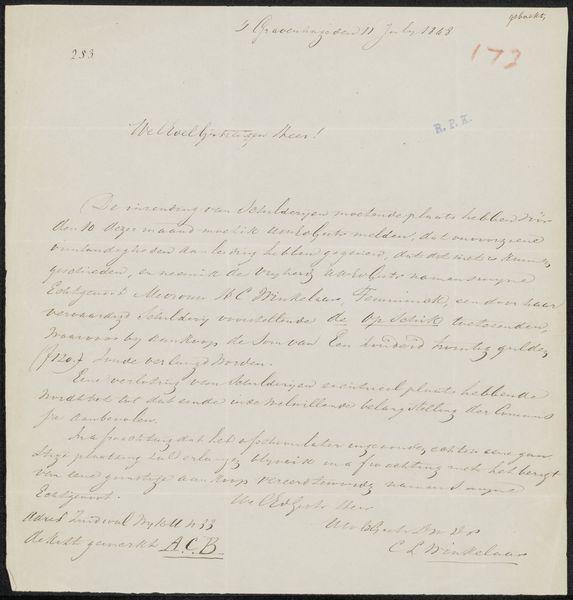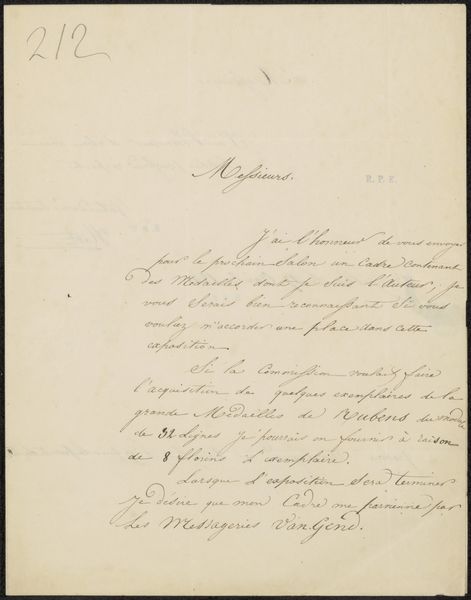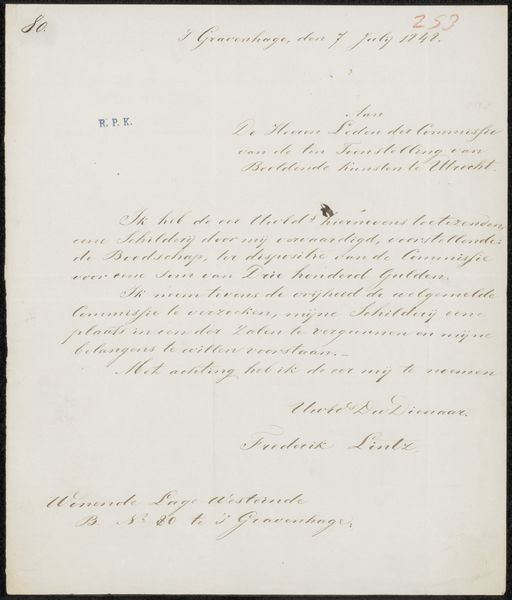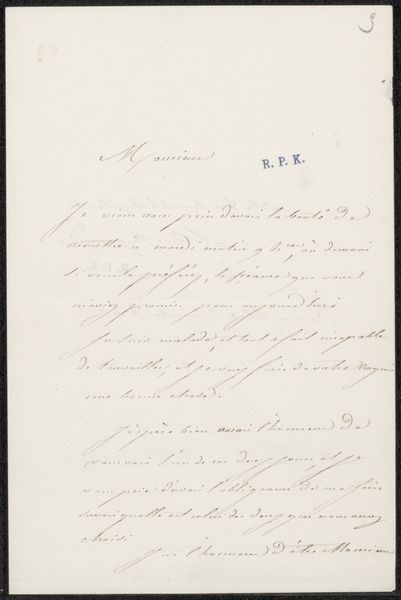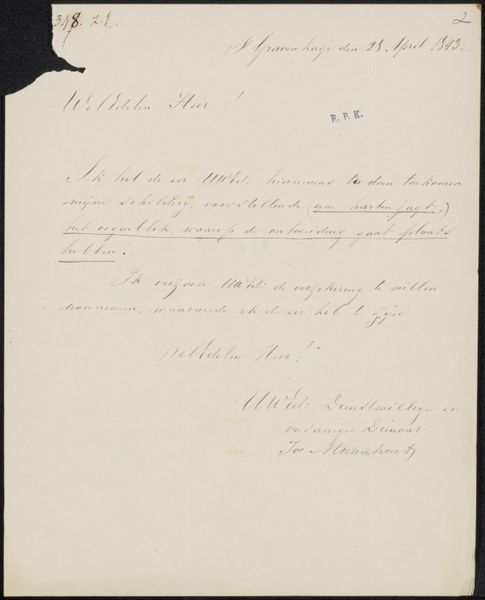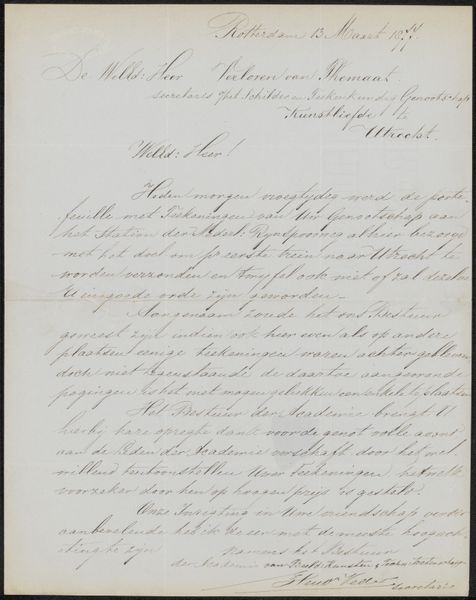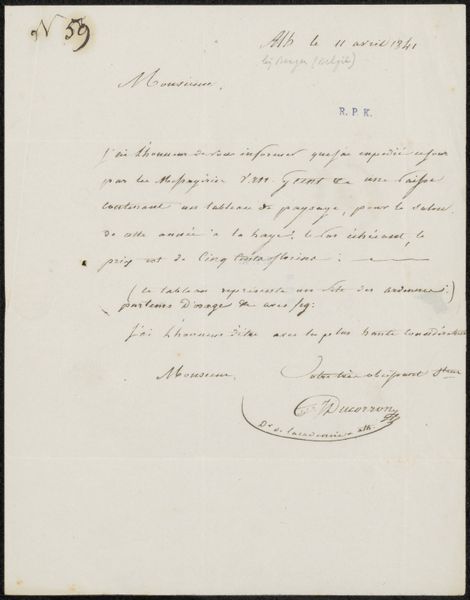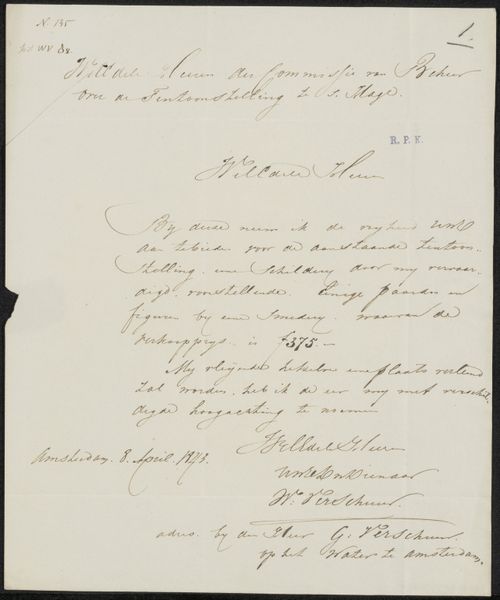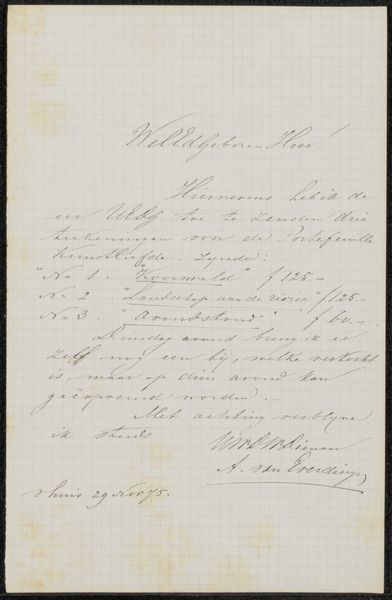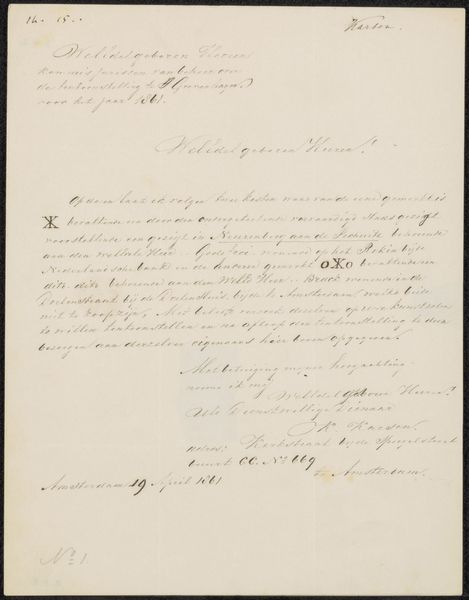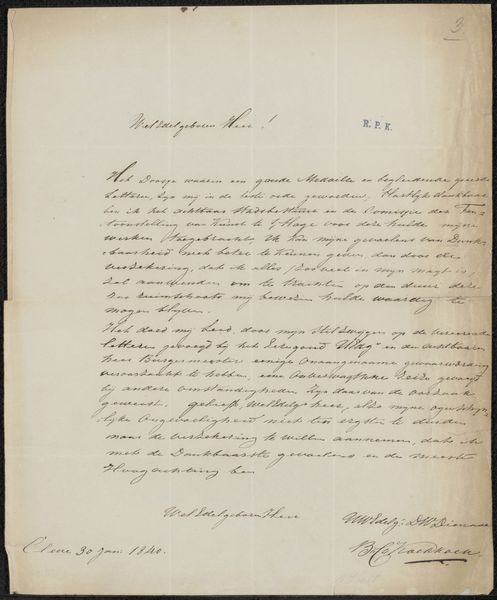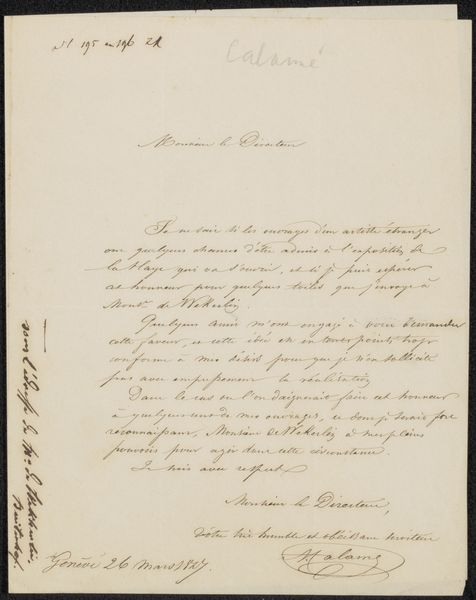
Brief aan jonkheer H.P.F. Hooft, secretaris van de commissie van de Tentoonstelling van Levende Meesters in Den Haag Possibly 1841 - 1844
0:00
0:00
jandamsteuerwald
Rijksmuseum
drawing, paper, ink, pen
#
drawing
#
paper
#
ink
#
romanticism
#
pen
#
calligraphy
Copyright: Rijks Museum: Open Domain
Curator: This work, "Brief aan jonkheer H.P.F. Hooft," by Jan Dam Steuerwald, likely from between 1841 and 1844, is an intriguing document rendered in ink on paper. Its elegance lies in its form as much as its content. Editor: It has such a delicate and somewhat austere character. The cool tone of the paper contrasts so strongly with the warmth one might expect in personal correspondence. It evokes formality and the labor connected with communicating information. Curator: Indeed. The artist's materials—paper, pen, and ink—become vehicles for bureaucratic exchange. Consider the role of paper production in this period, the standardization of letter writing, the social structures it represents, and who had access to these resources and modes of communication. Editor: Right. Seeing it not just as a message but as a material object deeply entrenched in a specific socio-economic fabric. The calligraphic hand hints at status, suggesting perhaps the aspirations or cultivated self-image of the writer. Who was the recipient, and what power dynamic existed between them? Curator: Precisely. Jan Dam Steuerwald addressed this letter to jonkheer H.P.F. Hooft, the secretary of the Commission for the Exhibition of Living Masters in The Hague. Think of this context: the "Living Masters" exhibitions played a vital role in defining and promoting artistic talent. It was a moment of great visibility. Editor: So the act of writing itself, the precise control required of the pen and ink, becomes a performance of social capital. It underscores how deeply entwined artistic production was with systems of patronage and recognition. A letter of such elegant, crafted prose elevates the sender, almost like another submission to a curated setting. Curator: It is easy to think the Romantic artists worked alone, following only inspiration, but this letter highlights the infrastructure artists were required to participate in. Even a document can illuminate art history. Editor: I am struck, in viewing it, that correspondence and its design acted as visual emblems for professional reputation in artistic circuits of the time. This helps understand how identity could be shaped and reinforced by a hand-written message in ink. Curator: An ordinary communication reveals something vital about its own time. Editor: Yes, it invites us to contemplate not just the artist but the very systems shaping his world.
Comments
No comments
Be the first to comment and join the conversation on the ultimate creative platform.

